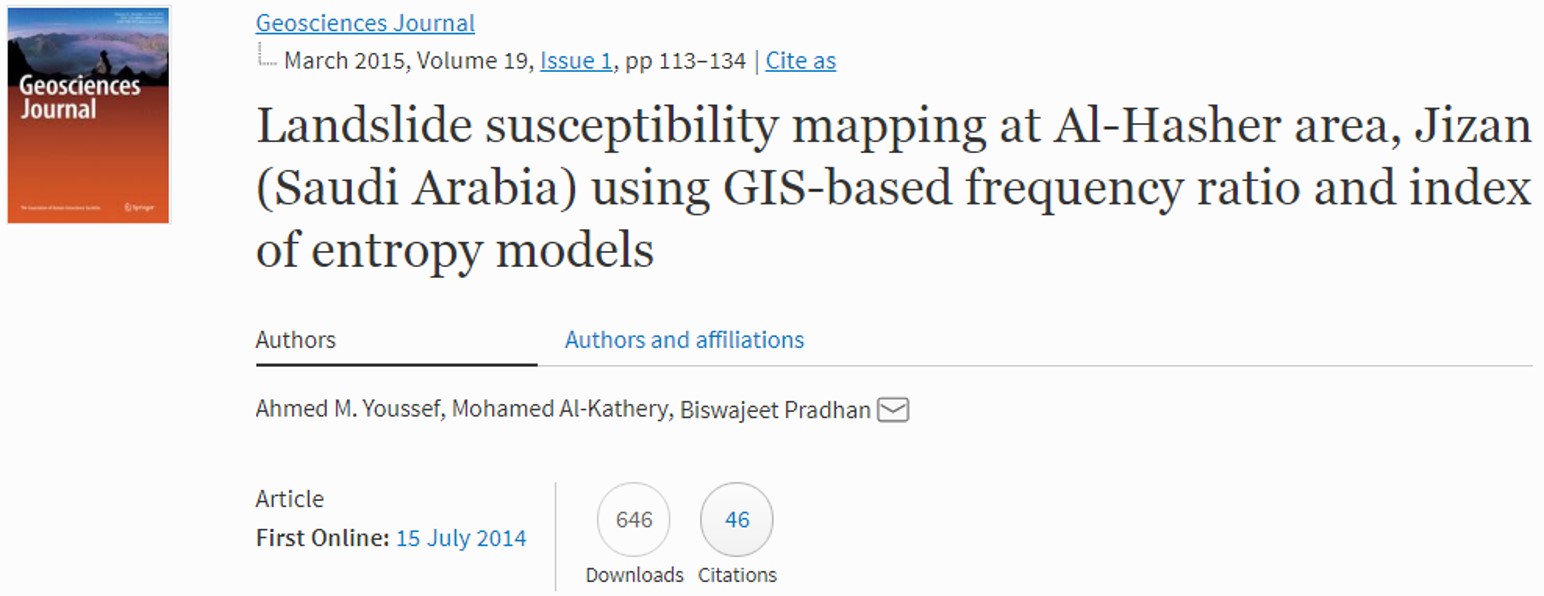Mountain areas in the southern western corner of the Kingdom of Saudi Arabia frequently suffer from various types of landslides due to rain storms and anthropogenic activities. To resolve the problem related to landslides, landslide susceptibility map is important as a quick and safe mitigation measure and to help making strategic planning by identifying the most vulnerable areas. This paper summarizes findings of landslide susceptibility analysis at Al-Hasher area, Jizan, KSA, using two statistical models: frequency ratio and index of entropy models with the aid of GIS tools and remote sensing data. The landslide locations (inventory map) were identified in the study area using historical records, interpretation of high-resolution satellite images that include Geo-Eye in 2.5 m and Quickbird in 0.6m resolution, topographic maps of 1:10,000 scale, and multiple field investigations. A total of 207 landslides (80% out of 257 detected landslides) were randomly selected for model training, and the remaining 50 landslides (19%) were used for the model validation. Ten landslide conditioning factors including slope angle, slope-aspect, altitude, curvature, lithology, distance to lineaments, normalized difference vegetation index (NDVI), distance to roads, precipitation, and distance to streams, were extracted from spatial database. Using these conditioning factors and landslide locations, landslide susceptibility and weights of each factor were analyzed by using frequency ratio and index of entropy models. Our findings showed that the existing landslides of high and very high susceptibility classes cover nearly 80.4% and 79.1% of the susceptibility maps produced by frequency ratio and index of entropy models respectively. For verification, receiver operating characteristic (ROC) curves were drawn and the areas under the curve (AUC) were calculated for success and prediction rates. For success rate the results revealed that for the index of entropy model (AUC = 77.9%) is slightly lower than frequency ratio model (AUC = 78.8%). For the prediction rate, it was found that the index of entropy model (AUC = 74.9%) is slightly lower than the frequency ratio model (AUC = 76.7%). The landslide susceptibility maps produced from this study could help decision makers, planners, engineers, and urban areas developers to make suitable decisions.


